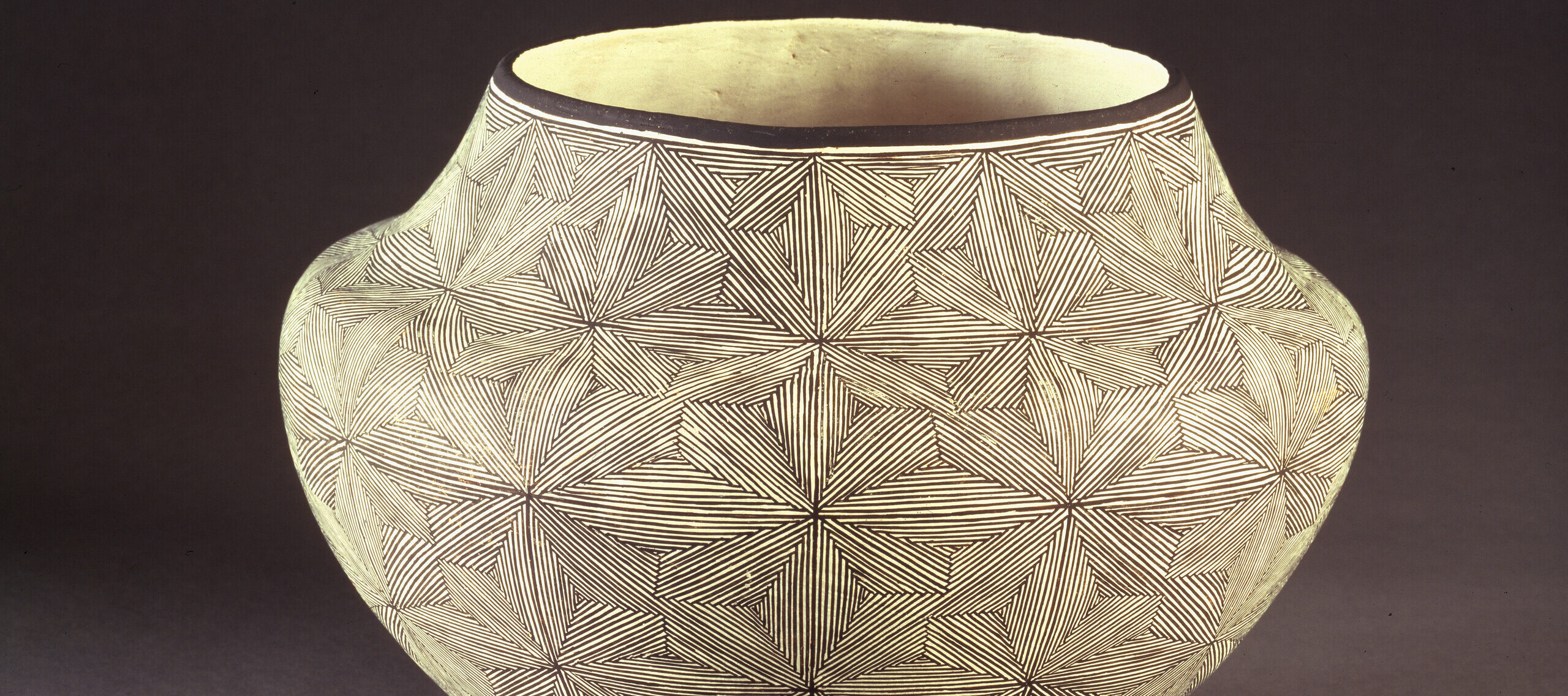Pottery has been produced on this continent by women for more than 2,000 years and continues to evolve as an art form with today’s practitioners combining centuries-old techniques and 20th-century innovations in ways that extend the reach of the genre. NMWA celebrates this living tradition with The Legacy of Generations: Pottery by American Indian Women, an exhibition featuring the work of twenty-eight potters, who are among the most revered representatives of this dynamic cultural heritage.
The exhibition focuses on the women who revived the traditions of their ancestors while forging new directions: the craft’s six well-known matriarchs, family members who followed in their footsteps, and women working in the avant-garde.
The Matriarchs introduces women born between 1860 and 1920 who brought the ancient traditions of their tribal cultures forward, reviving or renewing lost practices. Their pottery reveals extraordinary talent and devotion to their native traditions, to their art, and to their people. The matriarchs include Nampeyo of Hano, Maria Martinez, Lucy M. Lewis, Margaret Tafoya, Helen Cordero, and Blue Corn.
The second section, The Matrilineal Line, focuses on many of today’s best-known American Indian potters who are among the most illustrious progeny and protégées of the Matriarchs. They are Fannie Nampeyo, Dextra Nampeyo, Santana Martinez, Barbara Gonzalez, Emma Lewis Mitchell, Dolores Lewis Garcia, Carmel Lewis Haskaya, Lu Ann Tafoya, Grace Medicine Flower, Nancy Youngblood Lugo, Elizabeth “Buffy” Cordero-Suina, and Diane Calabaza-Jenkins.
The Avant-Garde, the third section, consists of contemporary American Indian women who have been inspired by the matriarchs and their descendants, but whose work has moved into a new kind of dialogue with Anglo-American art. They are Alice Cling, Anita Fields, Jody Folwell, Jean Bad Moccasin, Nora Naranjo-Morse, Jacquie Stevens, Roxanne Swentzell, Dorothy Torivio, Dora Tse-pe, and Lorraine Williams.
With the exception of the artists in this exhibition and a few others of equal stature, traditional methods of making American Indian pottery are fast becoming a vanishing art. By creating a legacy for generations, all of the artists in this exhibition are important torchbearers. As women and as potters, they have worked to ensure that Native American pottery traditions will endure in an ever-changing and increasingly complex world.

Maria Martinez and Julian Martinez, Black-on-black jar, ca. 1940; Polished blackware pottery with matte slip paint, 16 x 22 1/4 in. diameter; Gift of Clark Field, Philbrook Museum of Art, Tulsa, Oklahoma, 1946.46.1
The Artist,
Lucy M. Lewis
A life-long resident of Acoma Pueblo, located on a high plateau near Albuquerque, New Mexico, Lucy M. Lewis continued centuries-long traditions of pottery making.
The Artist,
Maria Martinez
For more than eight decades, Maria Martinez continued and extended the centuries-old pottery traditions of San Ildefonso Pueblo in northern New Mexico.
The Artist,
LuAnn Tafoya
LuAnn Tafoya perpetuates the traditional art of the Santa Clara Pueblo and her mother, Tewa artist Margaret Tafoya, by creating highly polished vessels decorated with Pueblo symbols.
The Artist,
Margaret Tafoya
Tewa artist Margaret Tafoya is recognized for her large, distinctively shaped vessels, as well as her innovative use of carvings as surface decoration.
